What Cupping Marks Tell You
When the cup is first applied, there is an original redness that comes to the surface on some people more than others. The degree of histamine and hyperemia has a lot to do with skin type, and the amount of heat in the local area. This is a bright redness, and it spreads around the location of the cup. This can be quite intense on some people. Following is an example of fresh cupping marks. The redness is created when the blood vessels expand, and a histamine-like substance is released, which is a sign that the immune response has just been stimulated. This is the Wei Qi being activated.
In the next 30 seconds to 20 minutes the tissue inside of the cup will begin to change. This may happen quickly, or slowly over the course of several minutes. Always stay with the patient for at least 2-3 minutes to make sure there is no unexpected reaction. If the skin changes very quickly, and looks very irritated, the cups should be loosened or removed. This is a sign of over-treatment. Less suction, and shorter treatment time would be recommended in the future. If the tissue under the cup is getting red, it doesn't necessarily mean that the marks will stay after the treatment. Often if gliding cupping is performed to even out the tissue and recirculate the stale blood vessels, marks can be dispersed and avoided.
When the skin starts to get tiny red spots, or petechiae it is demonstrating Qi and Blood Stasis. Extravasation is when blood cells escape the vessel wall. There should be no damage to local vessels if the technique is properly performed. The dead blood cells will be re-absorbed through the lymphatic system in 1-7 days. If there are severe red marks, this is a sign of underlying Blood Stasis. This happens when muscles are over used and there is lots of fibrous scar tissue in the area inhibiting the blood flow in the muscle. These marks may last several days, and can be quite dark in colour.
In the pictures below, we see different kinds of cupping marks that come after the initial histamine response, and detail the internal condition of the local tissues. Each of these images represents a different kind of response and body condition, we can see by the coloration that appears.
It should also be noted that different skin types will mark differently.
Cupping marks are not quite as simple as the cup creating a red circle when it is applied to the body. Well, sometimes its that simple, but often there is a lot more going on that we do not know about.
Cupping can expel wind and stagnation that has been caught in the tissues as early as childhood or different emotional or physical experiences in life.
Not only does histamine have an impact but also the amount of melanin in the skin. More melanated skin will produce more of a cupping badge, and skin with less melanin will generally produce less markings.
Example 1: I have seen a gray coloration come up and mix with the lotion. In this case, I asked the client if they were a smoker, and they said they weren’t, but they were exposed to second hand smoke their entire childhood.
Example 2: Patient has regular cupping done on the posterior of the body, and exclaims that they ‘always’ get cupping marks. The marks are consistent throughout, deep red in colour and are normal. This client is Persian, and has more melanated skin.
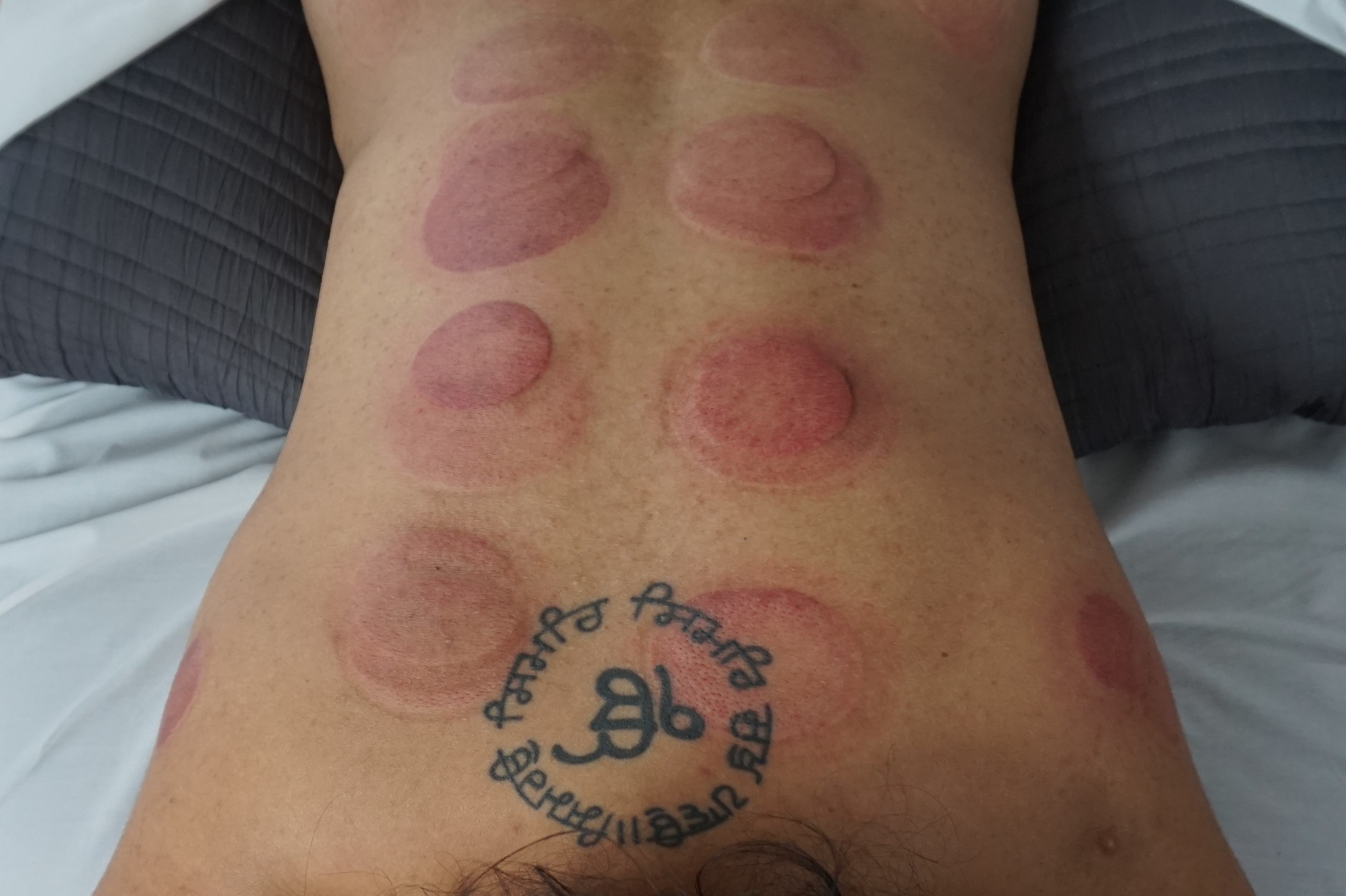
colours of cupping marks
brown, black and dark purple - chronic injury and stasis. Sometimes dead blood cells are not cleared from old injuries, also toxins in cellular waste have been reported. Reports of smells such as tobacco, chemicals, urine and feces have accompanied these marks.
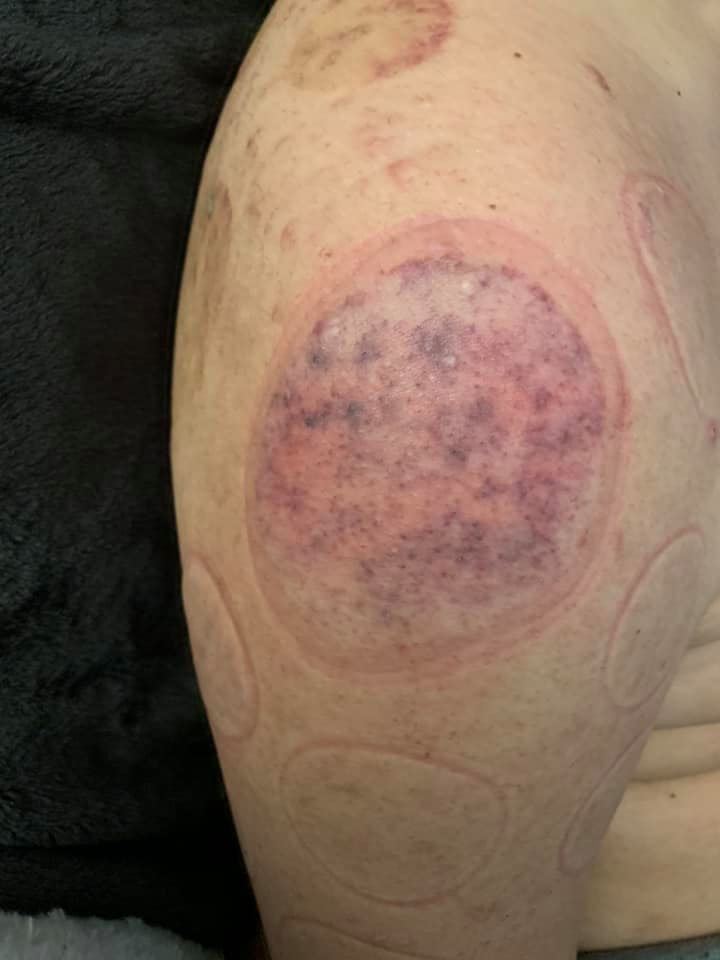
bright purple blood stasis with heat. Here, we have a repeat strain, the tissue has progressed from Qi stagnation to Blood Stasis (acute to chronic). We can see the purple 'freckles' when demonstrates the limitations in blood flow.
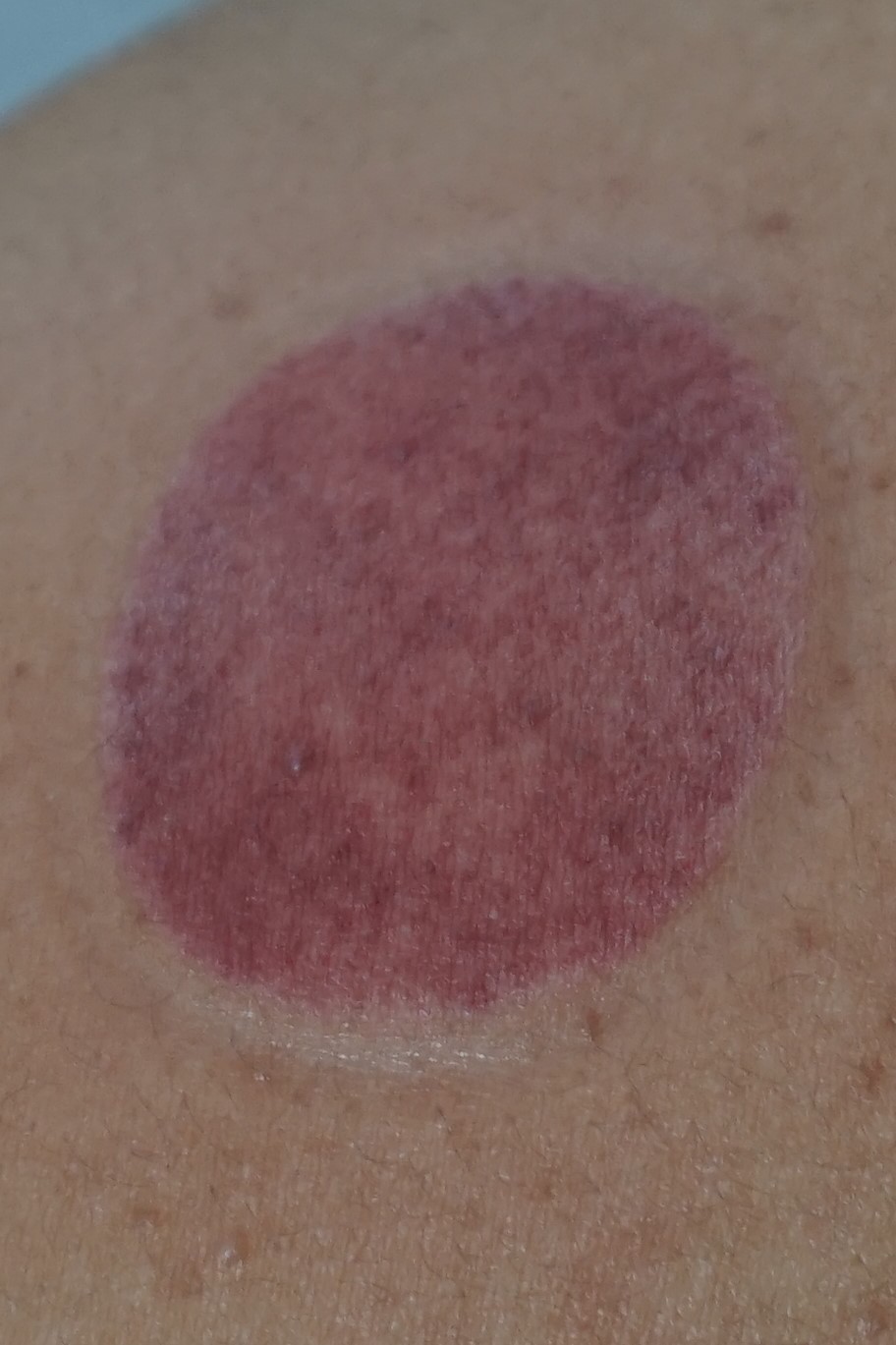
blue purple chronic blood stasis with no heat. The purple is very evident, it is more blue than red. The petechiae is more spread out.
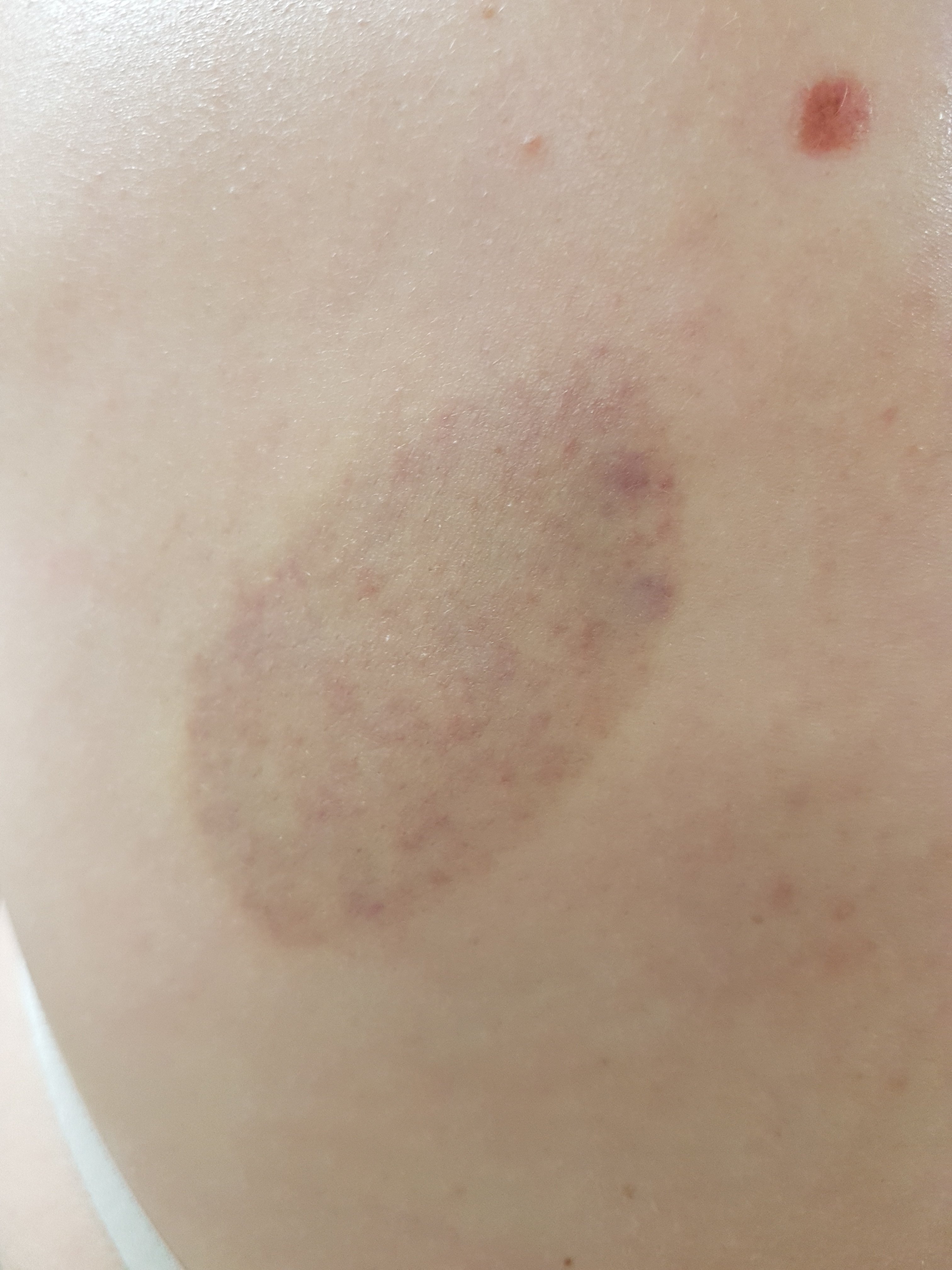
bright red: immediate injury with inflammation. Local Qi stagnation with heat.
This is a typical cupping mark that may be seen when cupping a typical muscular injury. It could indicate that there is heat and inflammation, but circulation is consistent, so the outcome is positive. If all marks have this appearance, this could also be a sign of high melanin in the body.
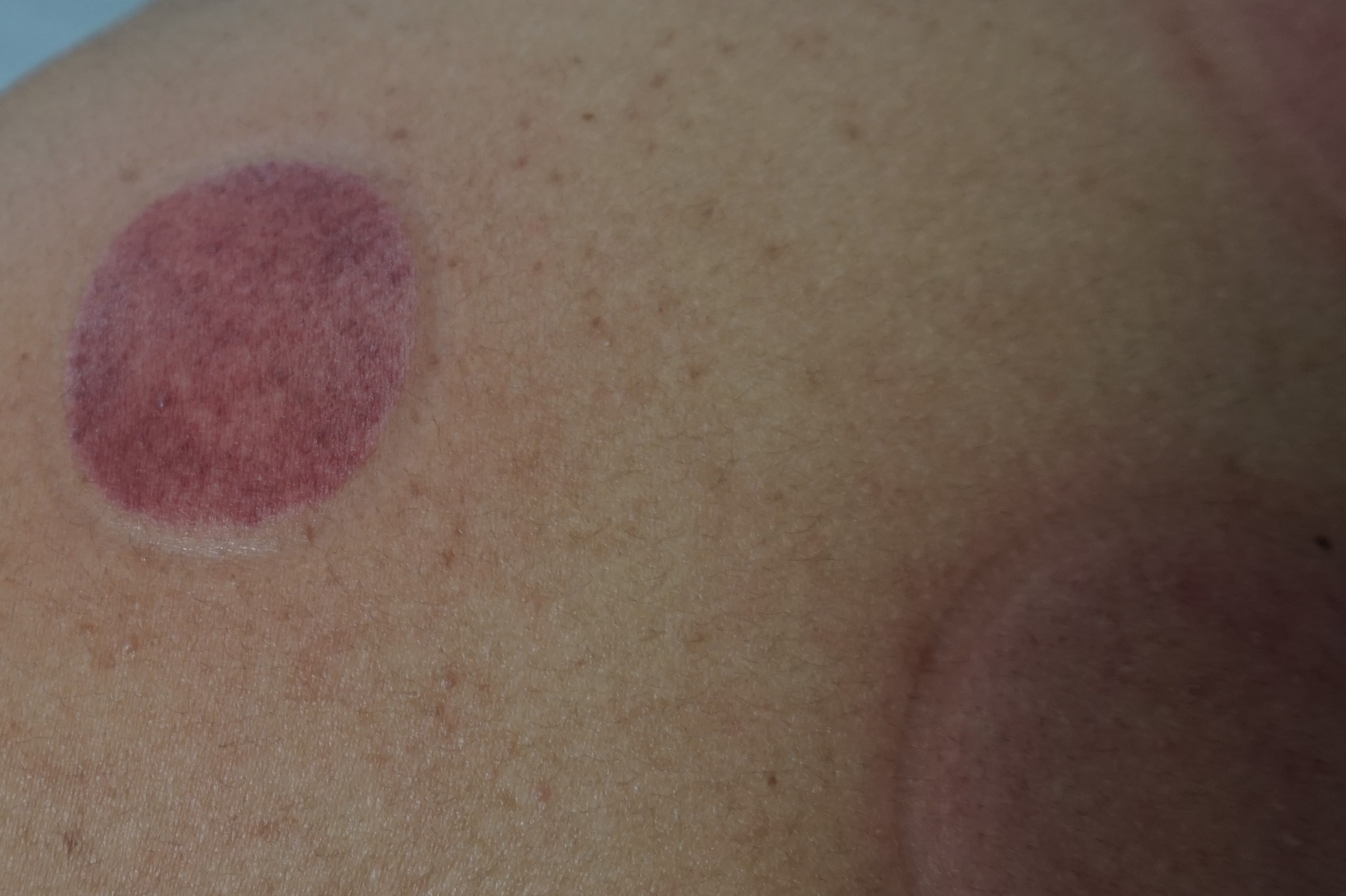
pale red: some heat, demonstrating tissue injury, but overall more Qi and Blood deficient body type. Possible fascial restrictions, weakness in digestive fire, or SP Qi and Blood deficiency.
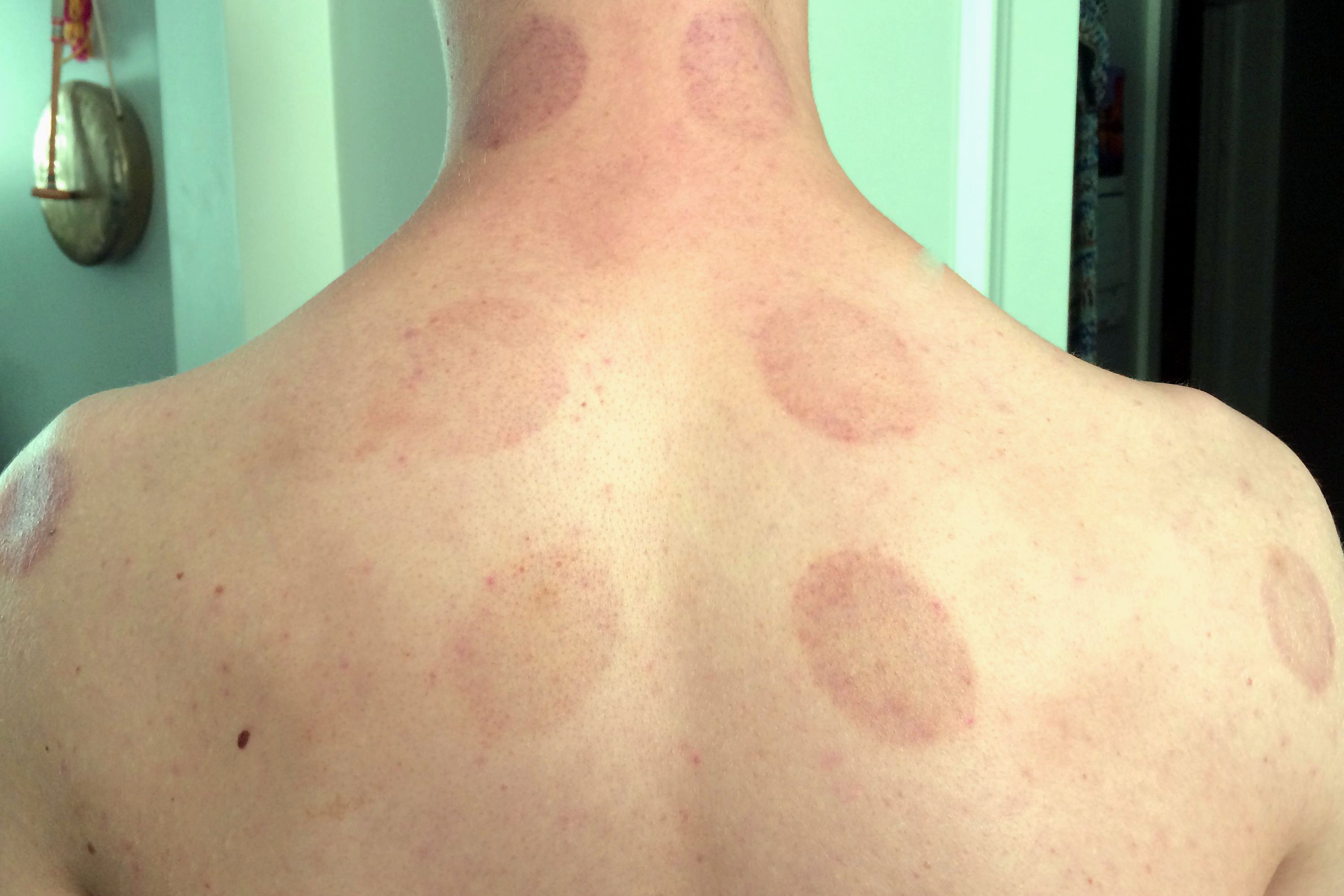
white and mottled – a lack of circulation, severe fascial restriction, cold (scar tissue). This kind of mark may make some thing that the treatment it not effective, but it couldn't be farther from the truth. The circulation is clearly lacking, and some moving cupping will help to warm the area. These marks are commonly seen in areas with more adipose tissue.
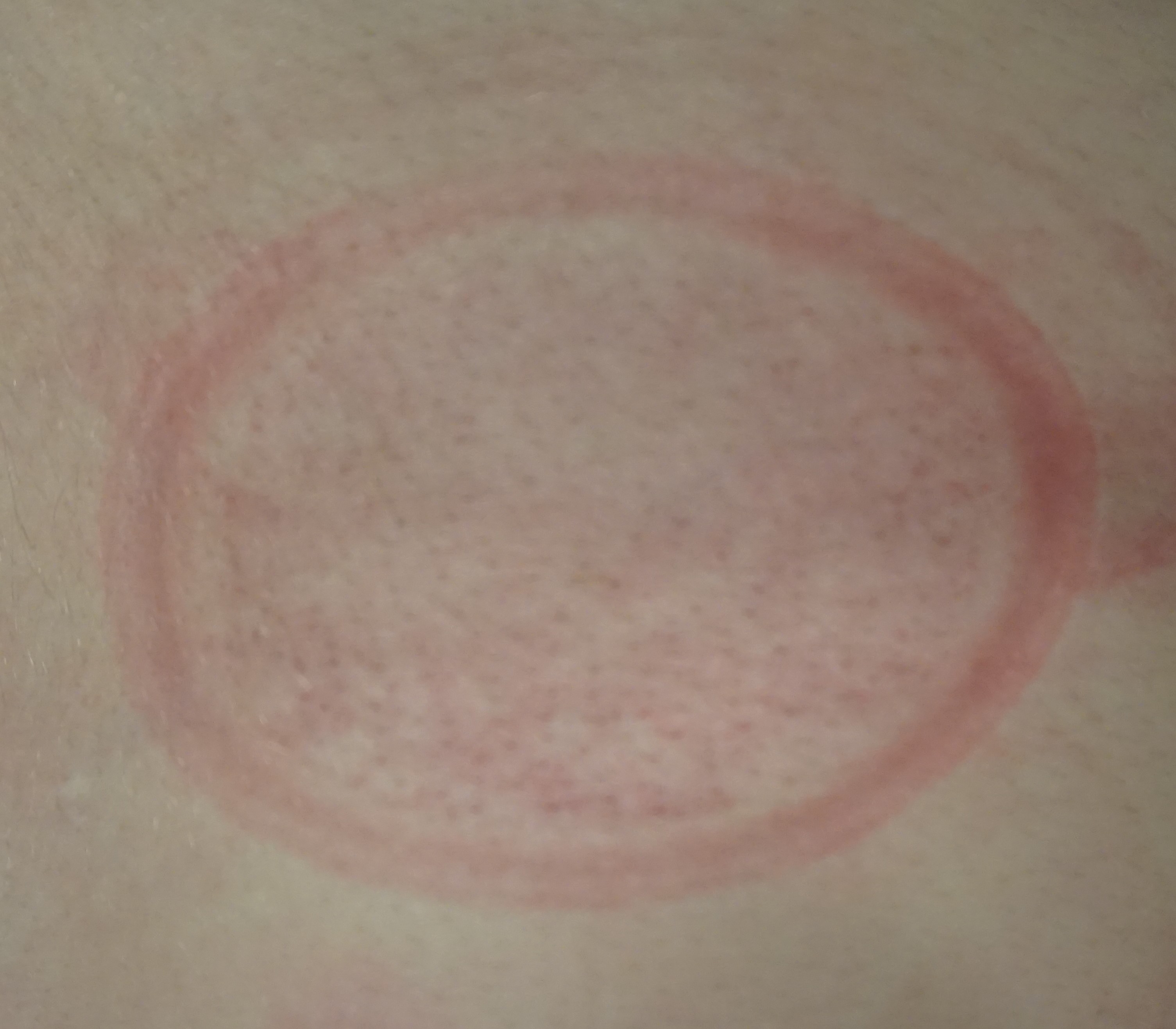
purplish white – this is demonstrating a possible blood deficiency with stagnation. Again, cupping can be so beneficial, but to proceed with caution.
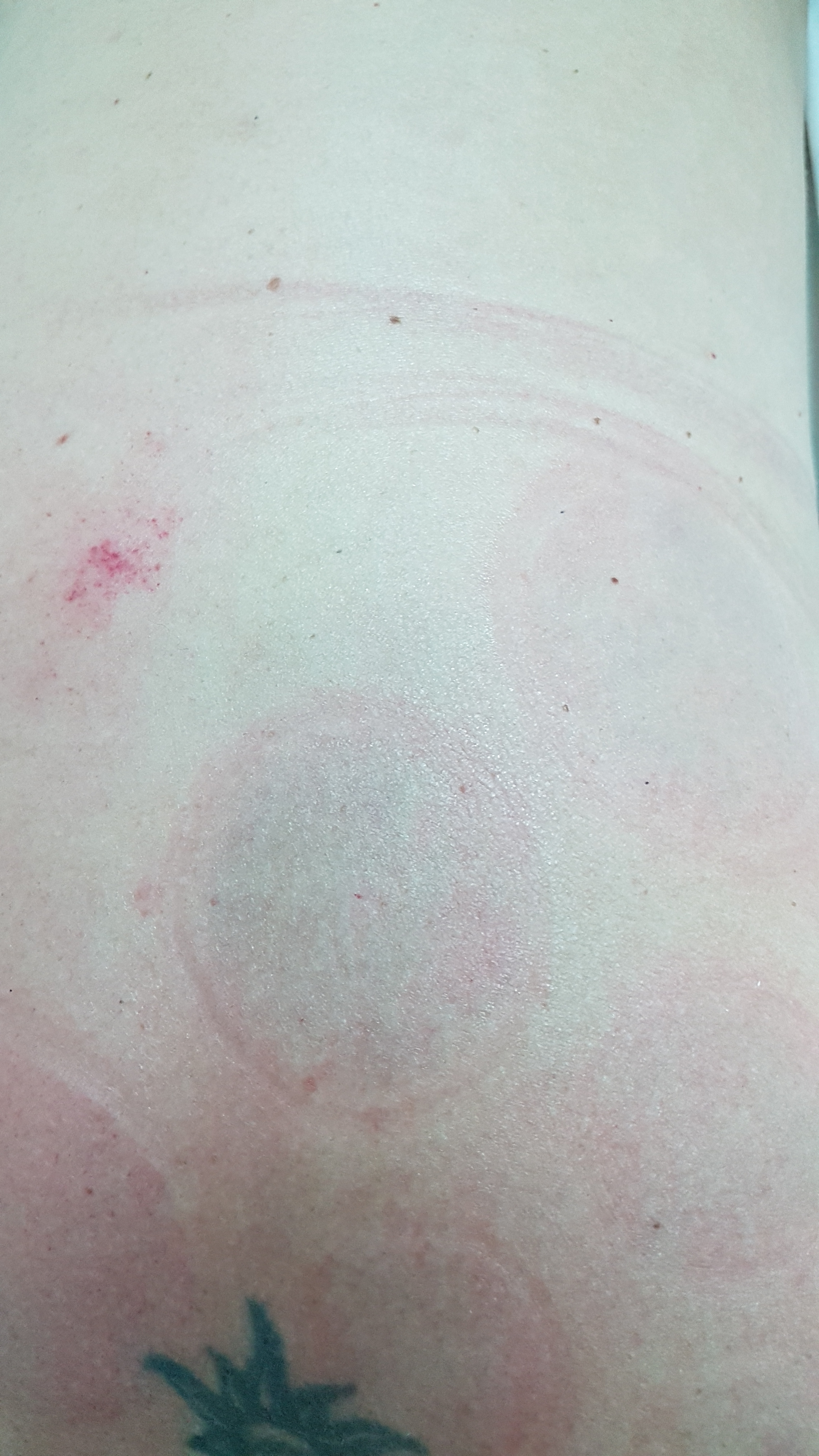
Other examples of cupping marks:

This is an example of what happens when a practitioner performs cupping on a patient without knowledge of prior health history, or a deep understanding of physiology. This patient bruises easily and has an autoimmyune condition. Deep cupping should never be performed in these cases. This treatment could lead to the patient having a flare-up and it could take some time for them to feel well again.
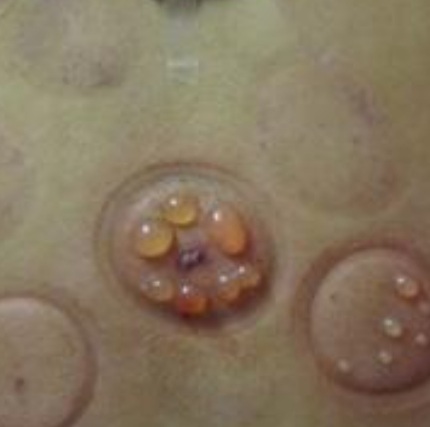
The conversation of blistering comes up often. i think that the jury is out on whether it is ok to blister a client. It is a sign of damp heat in the body, this is true. It can help to flush the body - also true. The question is whether we want to go that far. In my opinion, any time there are blisters, it is a sign of over-treatment. The lymphatic system and circulatory systems generally do not need this intense of a reaction to start functioning better. The second reason why I think that blistering is over treatment is that once the body is injured (blister) then it starts a healing response, and time and energy is taken from healing the original injury. If the body is gently coerced into beginning the healing process, only focussing on that, it will not waste precious time and Qi in managing the tretment reaction.
Galen believed that the body could only contain one injury at a time. We know better than that now.
Remember, if someone has fresh cupping marks already on their body DO NOT perform cupping over the existing marks. If the marks are old, yellowish and faded, superficial gliding cupping to help the wei qi circulate and remove the cellular waste.










0 comments
Leave a comment
Please log in or register to post a comment